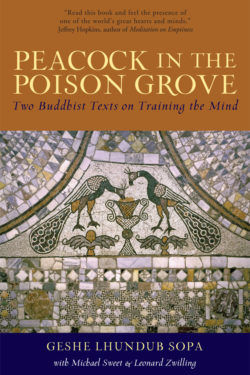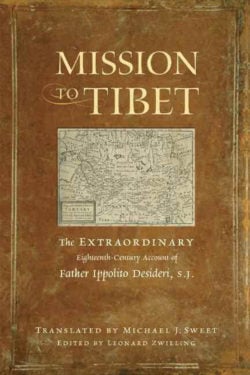Michael J. Sweet

Michael Sweet received a PhD in Buddhist Studies in 1977 from the University of Wisconsin–Madison under the direction of Geshe Lhundub Sopa. From 1977–78 he taught and did research at the American Institute of Buddhist Studies. After later graduate studies, he was a psychotherapist in public and private practice (1980–2004) and a sometime lecturer at UW Madison, where he has been an assistant clinical professor in the Department of Psychiatry. He has written extensively on the history of sexuality in South Asia and on Buddhist Studies. Since 2001 his research has focused on Ippolito Desideri and the Catholic missions in Tibet. Current research focuses on the first mission to Tibet, led by the Portuguese Jesuit Antonio de Andrade.
Books, Courses & Podcasts
Peacock in the Poison Grove
Geshe Sopa offers insightful commentary on two of the earliest Tibetan texts that focus on mental training. Peacock in the Poison Grove presents powerful yogic methods of dispelling the selfish delusions of the ego and maintaining purity in our motives. Geshe Sopa’s lucid explanations teach how we can fight the egocentric enemy within by realizing the truth of emptiness and by developing a compassionate, loving attitude toward others.
Mission to Tibet
Mission to Tibet recounts the fascinating eighteenth-century journey of the Jesuit priest ippolito Desideri (1684–1733) to the Tibetan plateau. The italian missionary was most notably the first european to learn about Buddhism directly with Tibetan scholars and monks—and from a profound study of its primary texts. while there, Desideri was an eyewitness to some of the most tumultuous events in Tibet’s history, of which he left us a vivid and dramatic account.
Desideri explores key Buddhist concepts including emptiness and rebirth, together with their philosophical and ethical implications, with startling detail and sophistication. This book also includes an introduction situating the work in the context of Desideri’s life and the intellectual and religious milieu of eighteenth-century Catholicism.


